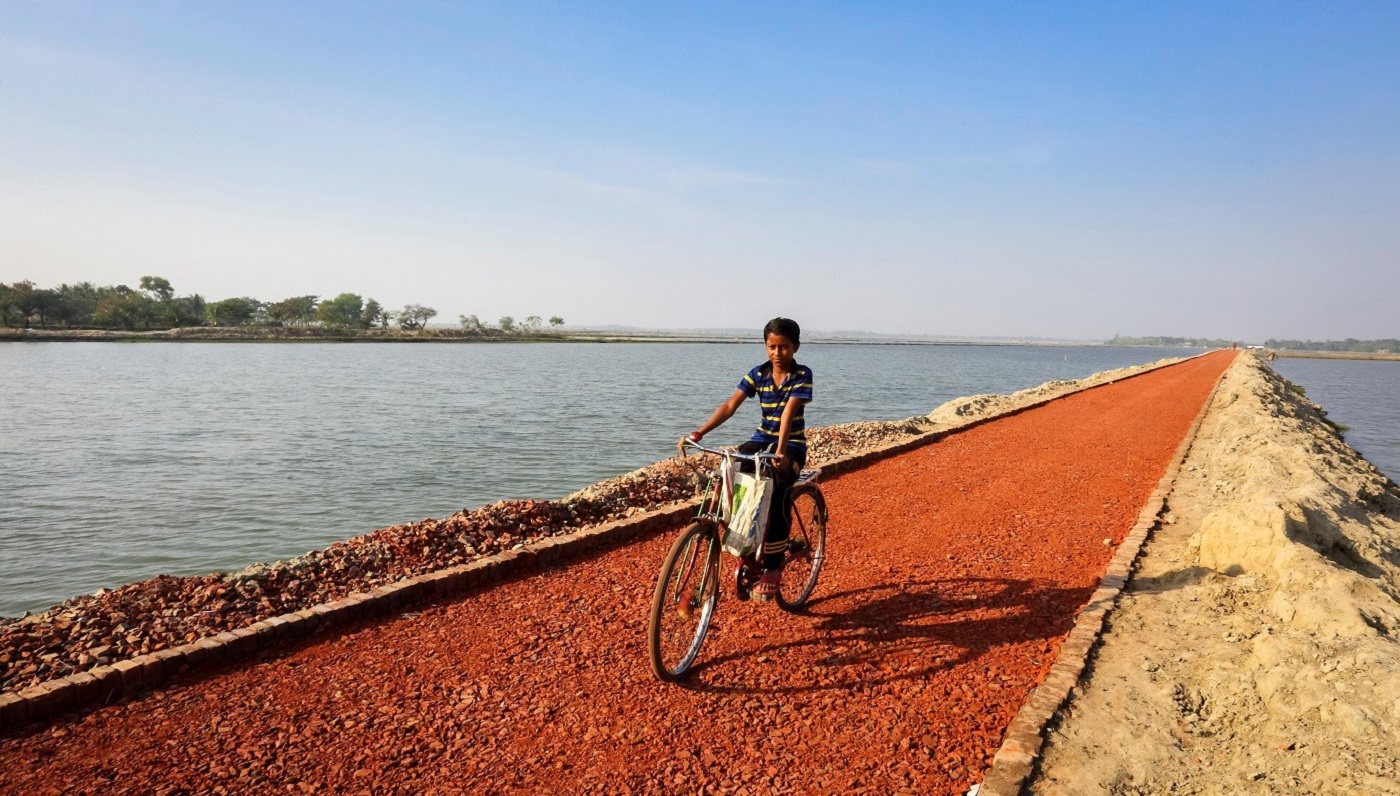The road to a greener future
IFAD Asset Request Portlet
Asset Publisher
The road to a greener future
Estimated reading time: 2 minutes
Roads may sometimes be taken for granted. But for remote rural communities, they can be life changing. Roads connect rural people to schools, hospitals, markets and banks—and bring goods, information and services back.
Rural infrastructure, in particular roads and water, is essential for productive rural economies. However, the two often work against each other.
Floods, dust storms and standing water all damage roads while roads can block water drainage, leading to flooding and erosion, and preventing groundwater from being replenished.
But by integrating roads and water management, through Green Roads for Water (GR4W), both can work better and contribute to sustainable economic growth.
Green roads for water
GR4W is based on the principle that infrastructure is meant to benefit, not harm, and that roads can be used for water management, including harvesting and storing. Communities that live near roads get a triple benefit: more reliable and climate resilient roads, no landscape degradation and new water infrastructure.
The design of GR4W varies depending on the geographical context and the expected levels of traffic. In arid areas, roads can be designed to collect and store water. In flood-prone areas, roads can manage water runoff. Lining roads with trees reduces dust and sequesters carbon. In mountainous areas they can prevent erosion and protect springs, while in coastal areas they can double as flood defences.
Resilient roads, resilient people
In Kenya, GR4W principles were used by the Makueni District Government to store rainwater and rehabilitate eroded gullies along 403 km of road. Mitre drains channelled water from the roads to farms, small dams prevented floodwaters from causing further erosion, while river crossings for vehicles were modified to also capture and store floodwater.
In Ethiopia, the Amhara Bureau of Agriculture involved hundreds of communities in its watershed project in the Amhara region. GR4W measures, like flood water spreaders and trenches to guide run-off from the roads, meant the soil soon became moist and fertile, improving farming productivity.
GR4W principles can also reduce vulnerability to climate disasters. In Bangladesh, the PROVATI project built 162 km of climate-proof roads, connecting farmers to markets. In this low-lying country, embankment roads are tall and wide so they can be used by people and livestock even during flooding, all the while protecting the land around them.
In these three examples, not only are roads better able to withstand the effects of water, but communities also had improved water resources. They could grow and earn more, while staying connected to the rest of the world.
Greener roads are possible
GR4W are not expensive, but the benefits can be extraordinary.
With engaged local communities, and creative water and road experts working side-by-side, something really remarkable can be achieved: roads that connect rural people to the world while conserving the environment and enhancing climate resilience.
Publication date: 14 September 2023